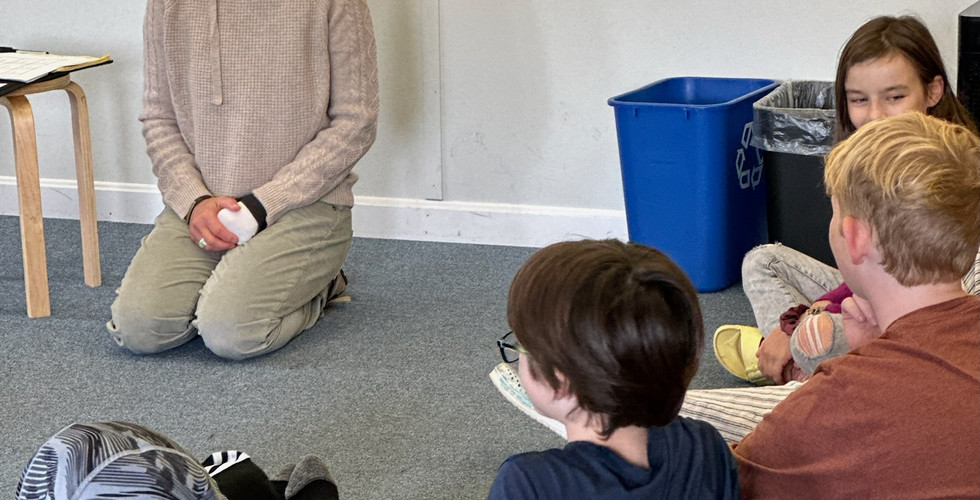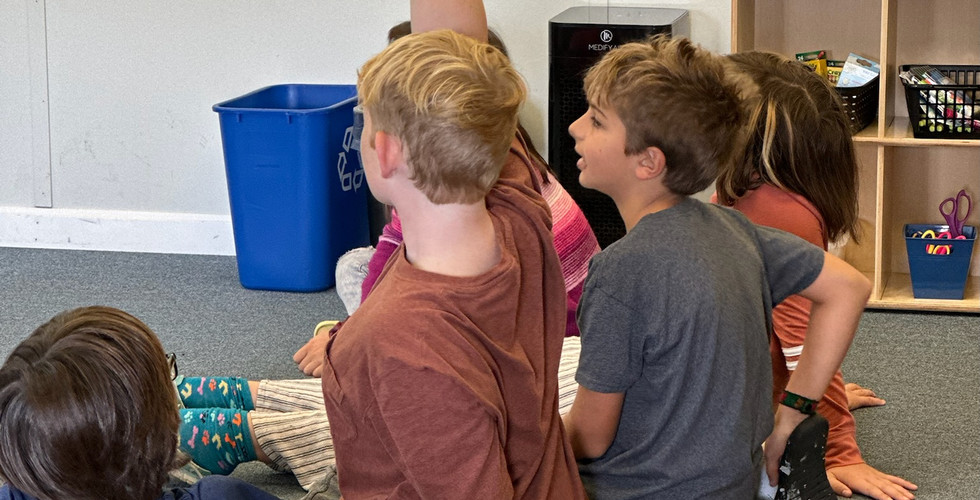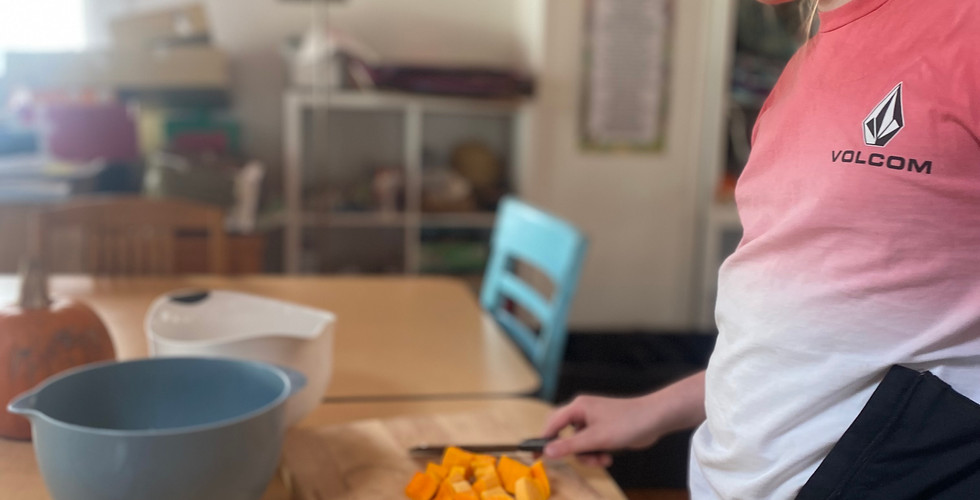Eagles & Social Emotional Learning (ages 9-11)
- Red Fox Community School

- Nov 21, 2022
- 5 min read
Updated: Nov 24, 2022
by Dave Rodich
The 2022/2023 school year has been an exciting one thus far for the Eagles class. With four new amazing students and a year long theme of local agriculture, there has been a great energy and sense of curiosity. At the start of the school year, we put emphasis on social emotional learning. First, the students created their class rules. Then, we moved on to using the ‘CARES’ acronym of social emotional competencies (cooperation, assertiveness, responsibility, empathy, self-control) to guide our morning meetings. The class guidelines and the competencies frame discussions on a daily basis, serving as umbrella life skills to be interpreted in a multitude of contexts. They also have guided the students creating their own social emotional growth goals.
These same concepts guide our approach to academics, supporting the students to take ownership of their learning. In our introductory math unit (number sense and computation) this has taken shape as our ‘menu of computation’ protocol, in which the students work towards mastery of operations at their own pace, building a portfolio of examples along the way. In ELA, it appears in our work towards our very own, yet-to-be-named, class newspaper. This has prompted students to learn skills such as how to craft interview questions, write in a journalistic voice, edit, proofread, create word puzzles, and more. It’ll be exciting to see the students use this format to express themselves! Another driving force in our approach to academics is integration. We’ve explored our local agriculture theme by visiting farms, inviting a farmer in as a guest speaker, and reading the book Seedfolks, with the students each creating a vignette of their own that wove into the setting of the book. This served as an entry point into the science of sustainability and what it means for local farmers. We’ve studied the water cycle, and students are now thinking critically about the quality of the water that a farm has to use and how it tends to the quality of the runoff emitted from its operations. It’s heartening to see the students thinking critically about bigger picture issues at play in our community.

"My country is Peru. It is in the Southern hemisphere. It is also in the Western hemisphere. Peru is close to Brazil and Columbia. Some questions are is it like 12am right now? How close is Vermont to Peru? It is also bordered by Bolivia and Chile and Ecuador. Peru is to the west of Brazil" - Will

"North Meadow Farms was a field trip the school took. We went to a big farm that was inspirational because I learnt how to cooperate a bit better. There was a coop which Wolfe and I emptied along with Lucy. It was also interestingto see chickens, bunnies, cows, pigs and turkeys. I learnt that some roosters are angry and mad at everything except food and water. All in all it was a great experience." - Max

"Pokemon cards. My first pack Monday. I got it in after school. Barnaby gave it to m. It was a coolant. I have 11 Pokemon cards." - Sammy

"On Saturday, October 15th Red Fox had a harvest fest. The Harvest Fest was both fun and tiring. One example of it being fun is there was some of the best tasting popcorn ever! Another example is playing in Hogalwood also Alabama Sal. A few examples of it being tiring is raking wood chips it really smelled moldy and just gross!" - Gabriel

"Today we filled water. We put sand gravel and charcoal. We layered the stuff into a plastic container and poured VERY dirty water into the container with holes. The dirty water got filtered through the charcoal and gravel first. Then the sands, then into a big container." -Ella

"Art this week was fun. The Eagles drew skulls of birds and cows and goats. It was great. We used special pencils that made light lines. After we finished we drew over the lines with oil pastels. Then we finished class. The skulls looked creepy." - Jack

"On the second day of school we saw four black bears, a mom and three cubs. They were eating berries on a bush outside. We all watched in awe. Karen called fish and wildlife. I was worried that they would do something to the bears. Luckily I had nothing to worry about they just told us some safety things." - Halle

"Yesterday on Wednesday we got busted because we were smuggling candy in Hawgolwood. And then the girls come in and saw the wrappers and then we had to surrender. Now we are not smuggling candy. What it was like in there was like a rabbit hole with spots to hide candy everywhere and candy that was not good tasted good and that's why Max, Jack and I smuggled candy also it tastes good." - Max

"When we went to Mad Toms it was so fun how we picked the apples and learned how to pick the apples without the bud out for next spring. The apples felt soft and smooth and smelled so good and tasted the same but better. The apples on the ground were so satisfying to stomp on. It made a sound like a crunch. They were so red almost like that they weren't apples! When I ate an apple there it was like heaven in your mouth! The person who made these apples really knows how to make apples! I don't know why they tasted so good but it's most likely that there good farmers!" - Narissa

"A long time ago, I read Harry Potter *gasp*. At the time, I was (regretfully) obsessed with it. But as time went on- or after read the Hunger Games - I started to notice it's flaws. Flaw number one: even though J.K. Roweling (the author) was praised for writing so any books in the series, I did notice that they were all pretty much the same plot with changes, (until the seventh). Flaw number two: there is no diversity. All the characters are white, straight people. I'm not saying it's a huge problem, but imagine all those parents, reading it to their children, and you want everyone to be able to relate to it, not just some. Flaw number three: some books after a while I just don't like them anymore for no particular reason. This is more an opinion though. All in all, I don't like Harry Potter. " - Evelyn
Explore. Discover. Learn
Some of our adventures this fall:
"Snow Penguin" the snow plow comes to visit Red Fox!
Learning to count seed and harvest flax at Smokey House Center in Danby.
For Hawgolwood, all you need is pure imagination!
Our annual Mountain Day at Merck Forest & Farmland Center. Hiking, singing, forest bathing and more!































































































Comments